27 Amazing Facts You Never Knew About Cruise Ships
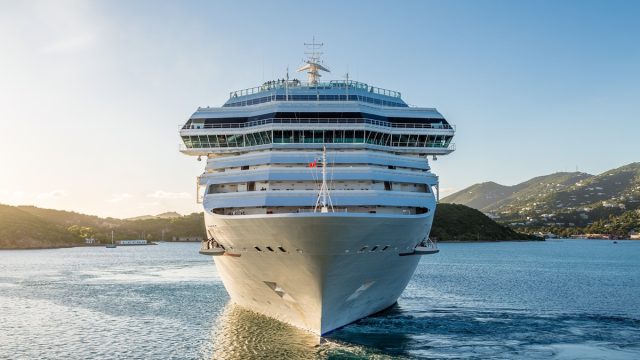
Whether you prefer to spend your vacations on land or at sea, you’ve got to admit that cruise ships are truly awe-inspiring. From their size (the tallest one tops out at 11 stories!) to how many people embark on them each year (about 20 million), cruise ships are serious modern marvels.
And no matter how seasoned a cruise-ship passenger you are, there are definitely a few things going on behind that scenes that you don’t know about. From the morgues located belowdeck to how far these ships sail each year, we’ve uncovered the most shocking facts about cruise ships.
1
The largest cruise ship is twice the length of the Washington Monument.
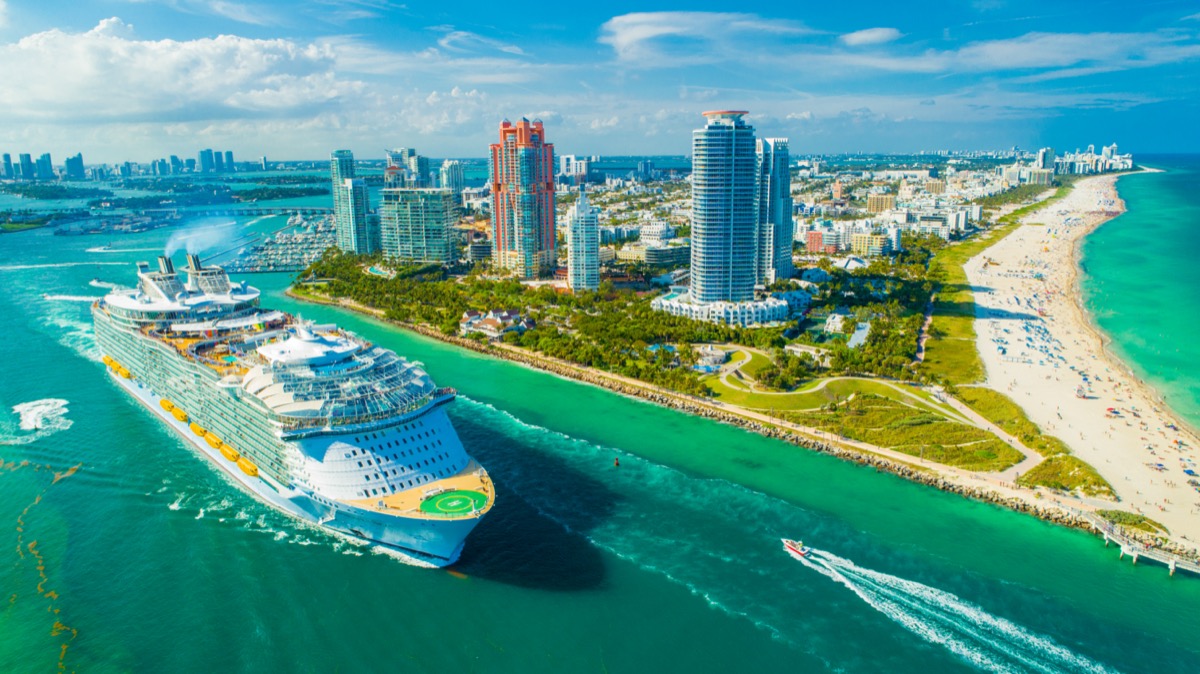
The world’s largest cruise ship, Royal Caribbean’s Symphony of the Seas, is composed of 18 decks and comes complete with 2,759 staterooms, 22 dining venues, 24 swimming pools, and a park with more than 20,700 plants. It also has robot bartenders, a ninth-floor zip line, an ice-skating rink, and a 92-foot-tall water slide. The ship (which debuted in 2018) is about 1,188 feet long—almost the length of four football fields or twice the length of the Washington Monument.
2
Some cruise ships have virtual balconies.
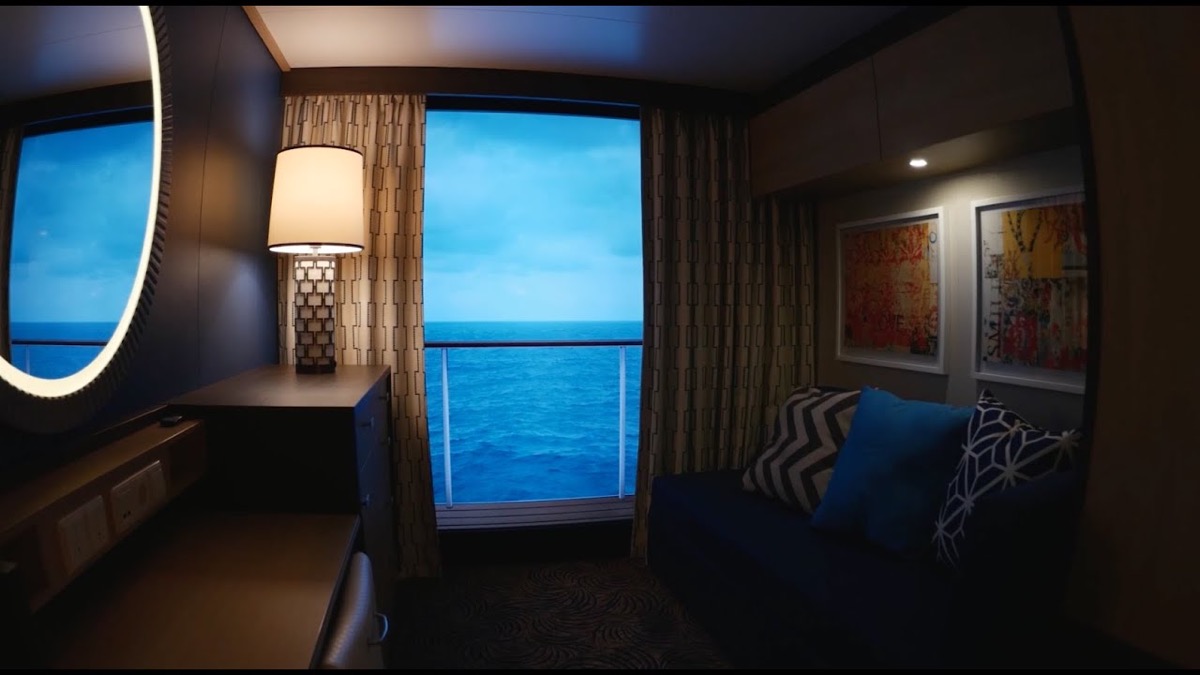
If you’ve ever embarked on a cruise before, you understand what a bummer it is to find yourself in an interior cabin. That’s why Royal Caribbean recently found a way to install virtual balconies that transmit real-time images from the outside of the ship. These images reflect where you’re located within the ship—so if your cabin is by the hull, you’ll be looking at images of what’s ahead, according to Cruise Critic.
3
The average cruise ship sails the equivalent of three times around the world each year.
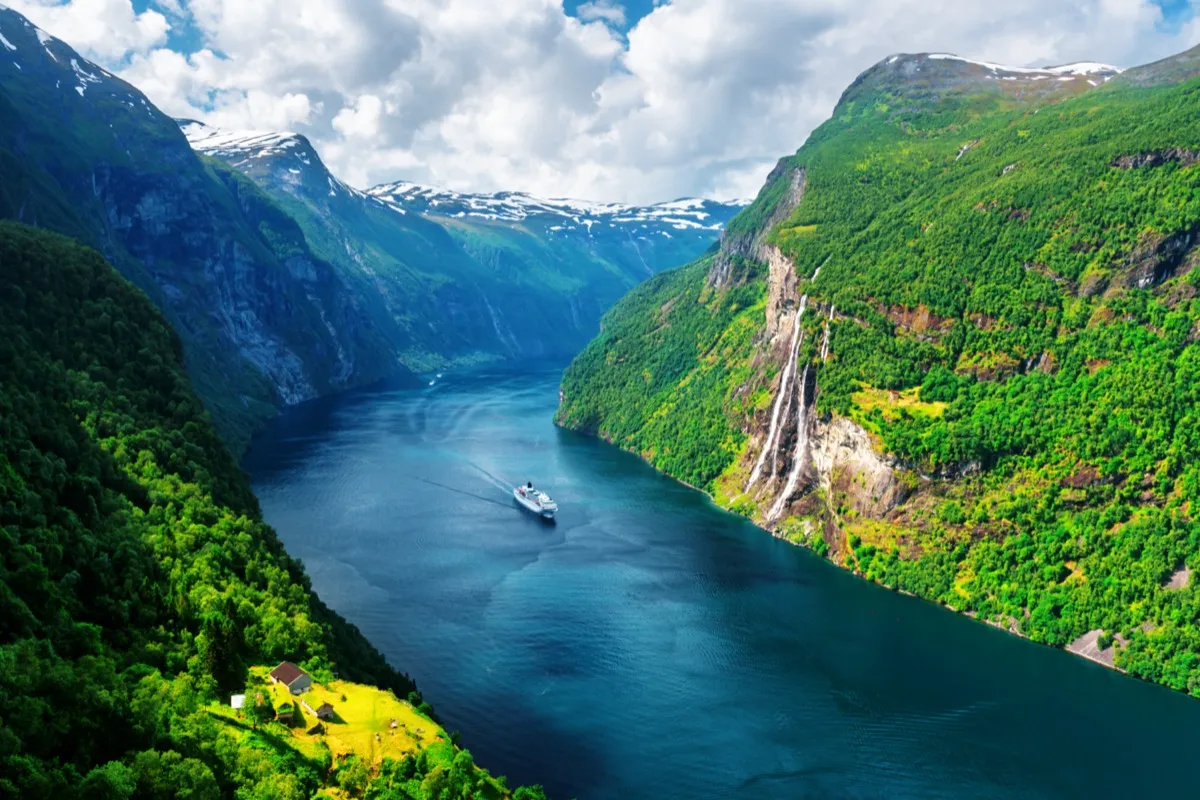
Every year, the average commercial cruise ship covers some 84,007 miles (or 73,000 nautical miles for all you sailing experts). That means they could travel around the world about three-and-a-half times, or get more than a third of the way to the moon.
4
Most cruise ships feature a fake funnel (or two, or three!).
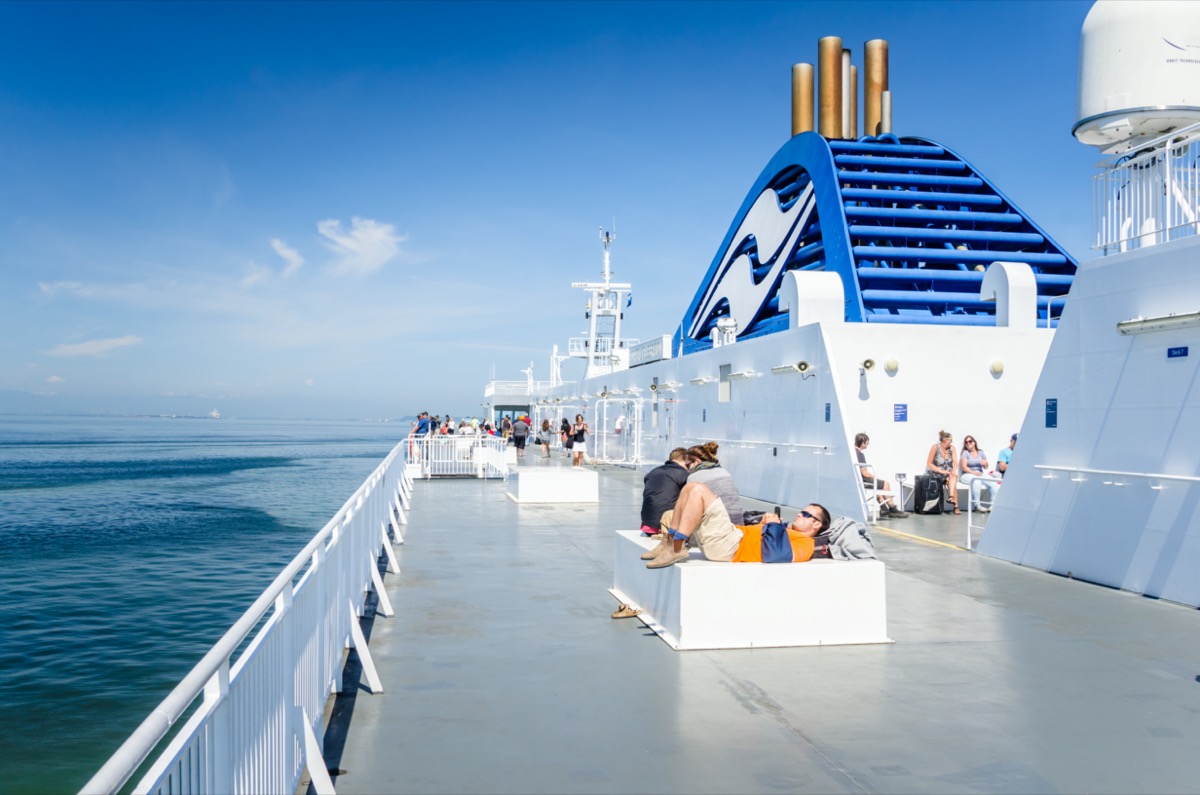
Funnels were originally introduced in the steamship days of ocean liners to expel smoke and fumes from the lower decks. And they’re still necessary today—just not as much. It turns out, the modern ship typically only needs one funnel, but most cruise ships still feature between two and four. That’s for aesthetic reasons (or, you know, for zip-line-suspension cables).
5
Cruise ships travel an average speed of 20 knots.
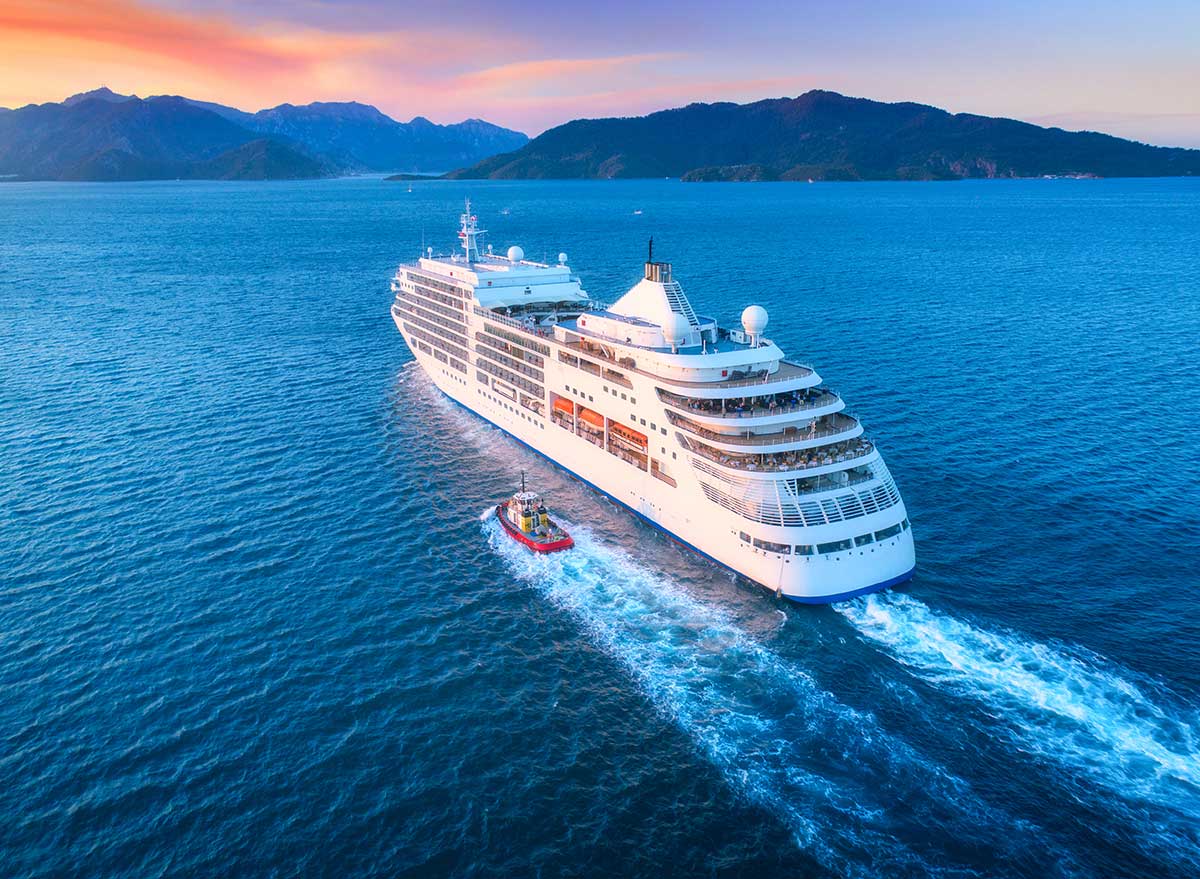
That’s the equivalent of 23 miles per hour, according to Cruise Critic. A ship’s speed depends on a variety of factors, from the capabilities of its engines to the conditions at sea.
6
Cruise ship crew members have a secret set of codewords.
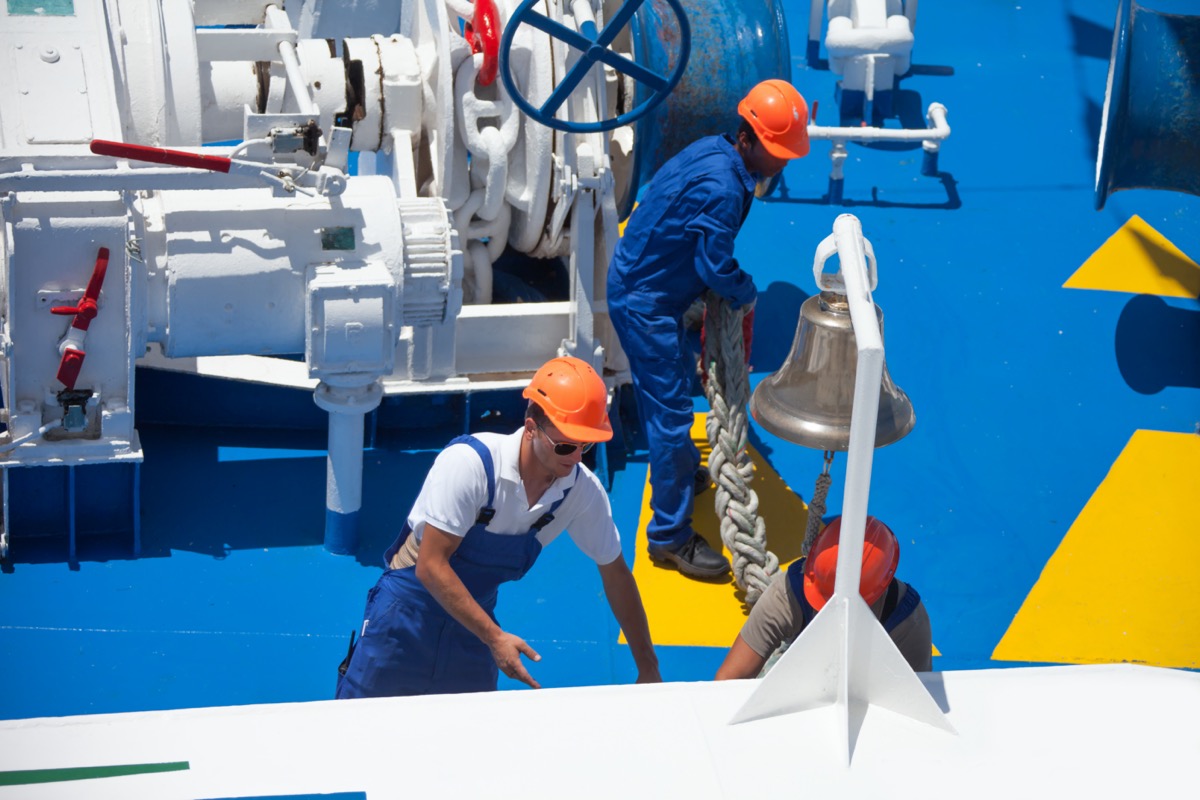
Just like doctors, soldiers, and other professionals, crew members have secret codewords they use to communicate. As Royal Caribbean cruise ship director Brandon Presser writes in Bloomberg, “A ‘30-30′ means the crew is asking maintenance to clean up a mess; three times during my stint I called in a ‘PVI’ (public vomiting incident). An ‘Alpha’ is a medical emergency, a ‘Bravo’ is a fire, and ‘Kilo’ is a request for all personnel to report to their emergency posts, which happens in the event of, say, a necessary evacuation.”
7
A millionaire plans to build a replica Titanic.
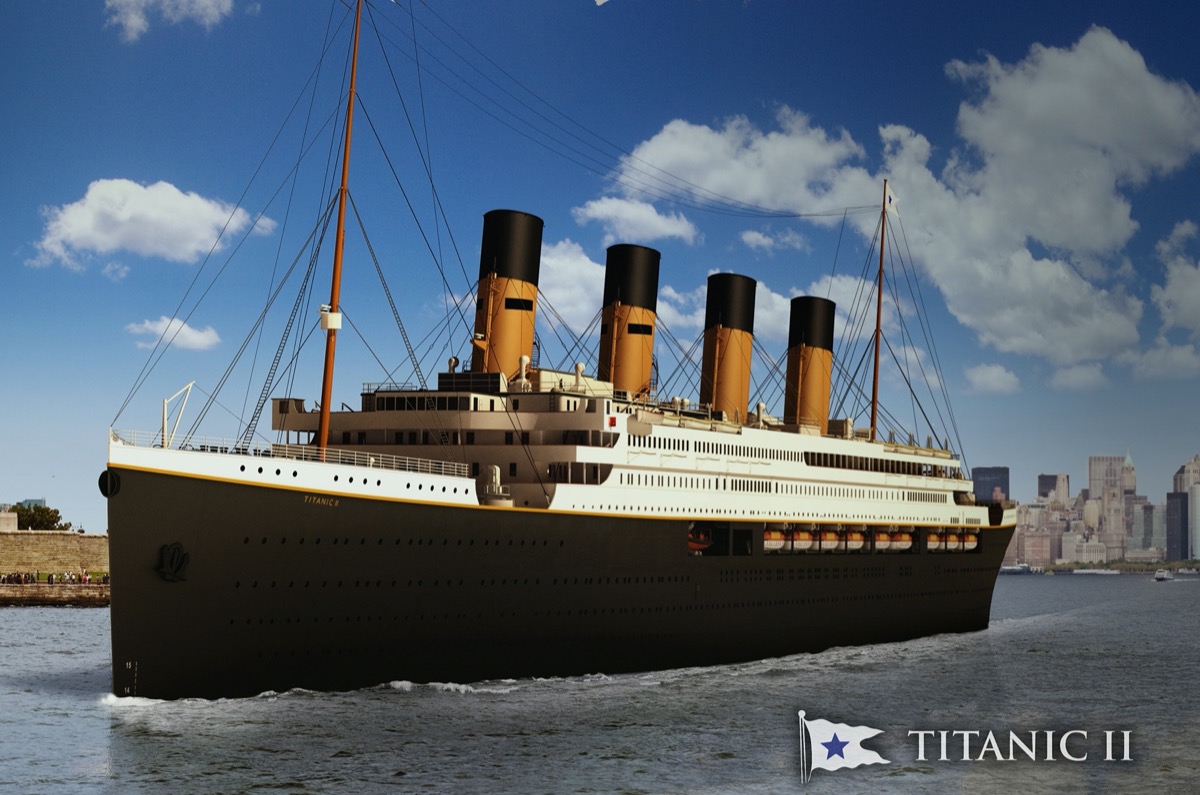
Australian millionaire Clive Palmer announced his plans to create a working replica of the Titanic—a project that has been delayed twice since its inception. Now, according to CNN, the businessman has declared that the ship will be ready to depart sometime in 2022—and will hopefully not meet the same fate as its predecessor.
8
The Titanic was only a fraction of the size of modern cruise ships.
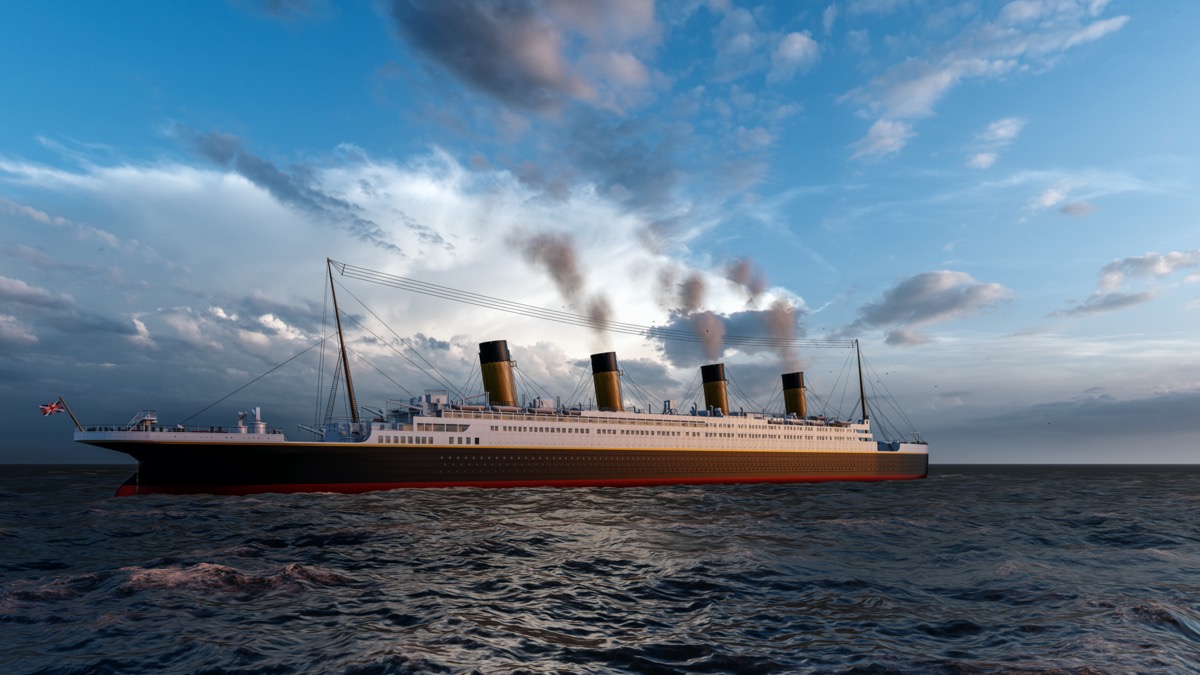
Compared to nearly every modern cruise ship, the Titanic falls short in a range of ways, from its size to its accommodations. For example, Royal Caribbean’s Oasis of the Seas, which made her maiden voyage in 2009, is about five times more spacious than the Titanic. And while the Titanic was only able to accommodate 2,229 guests, the Oasis of the Seas can accommodate 5,400.
9
Two cruise ships served as makeshift shelters for those left homeless after Hurricane Katrina.
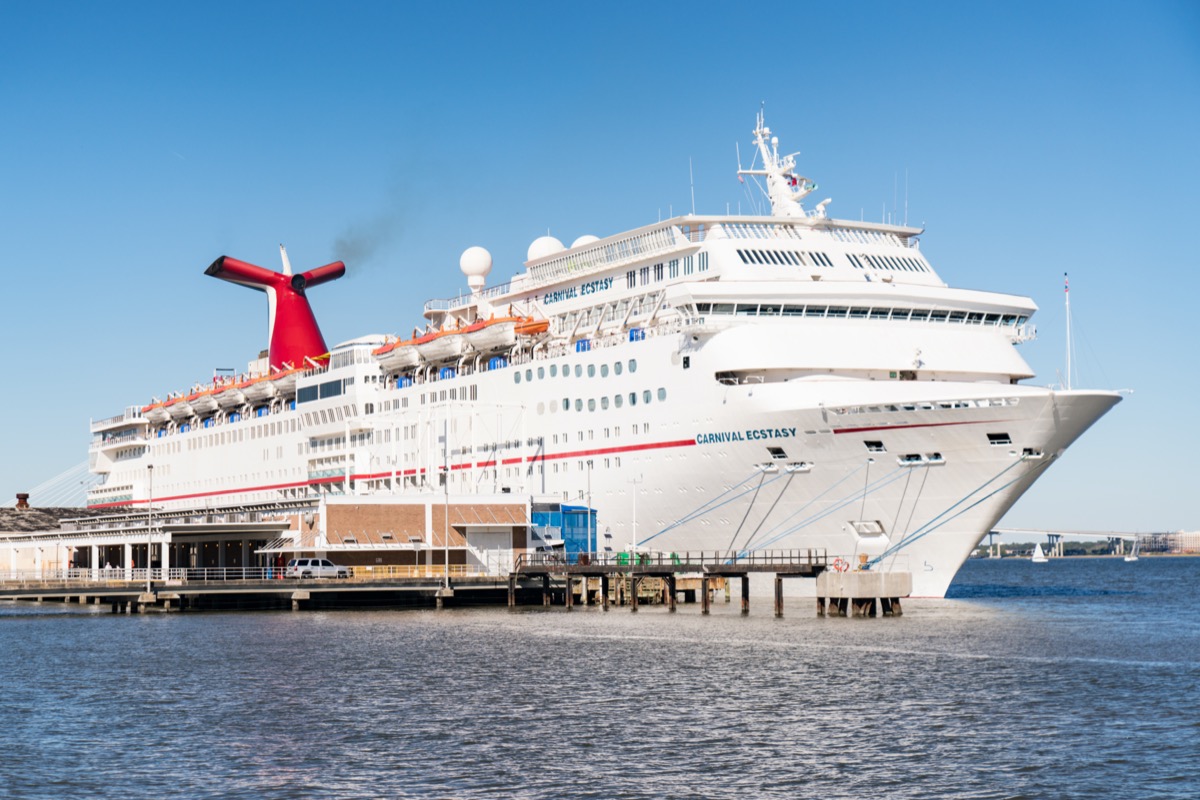
After Hurricane Katrina left thousands of city workers homeless in New Orleans, two Carnival cruise ships, the Ecstasy and the Sensation, provided shelter, as well as free hot meals, workout centers, and game rooms, to these workers and their families. “They are bending over backward for us,” said one police captain to the New York Times. “They are treating us like we’re on a cruise.” Now that’s customer service.
10
The Church of Scientology owns its own cruise ship.
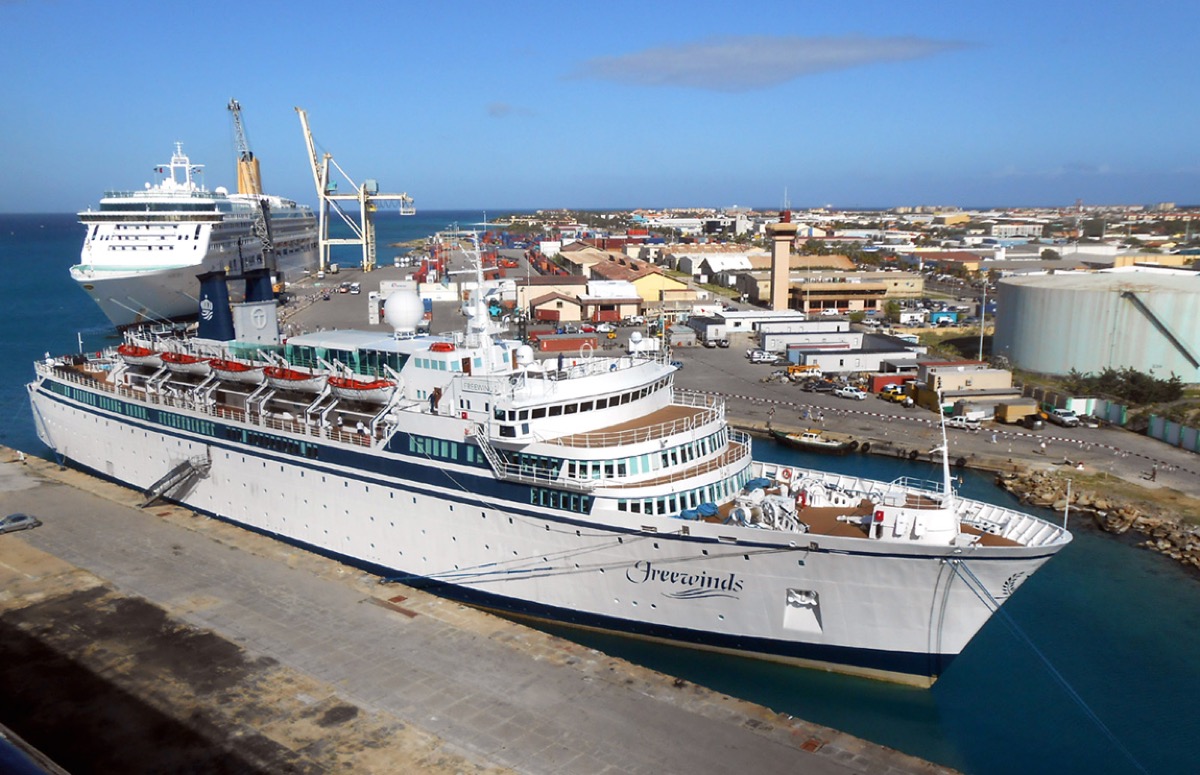
The Freewinds, a 440-foot, Caribbean-based ship, has been in operation since 1988. According to the Church of Scientology, it serves as “a religious retreat ministering the most advanced level of spiritual counseling in the Scientology religion.” To a Scientologist, going on such a retreat is “the most significant spiritual accomplishment of his life and brings with it the full realization of his immortality,” they write.
11
Cruise ships often perform rescue missions.
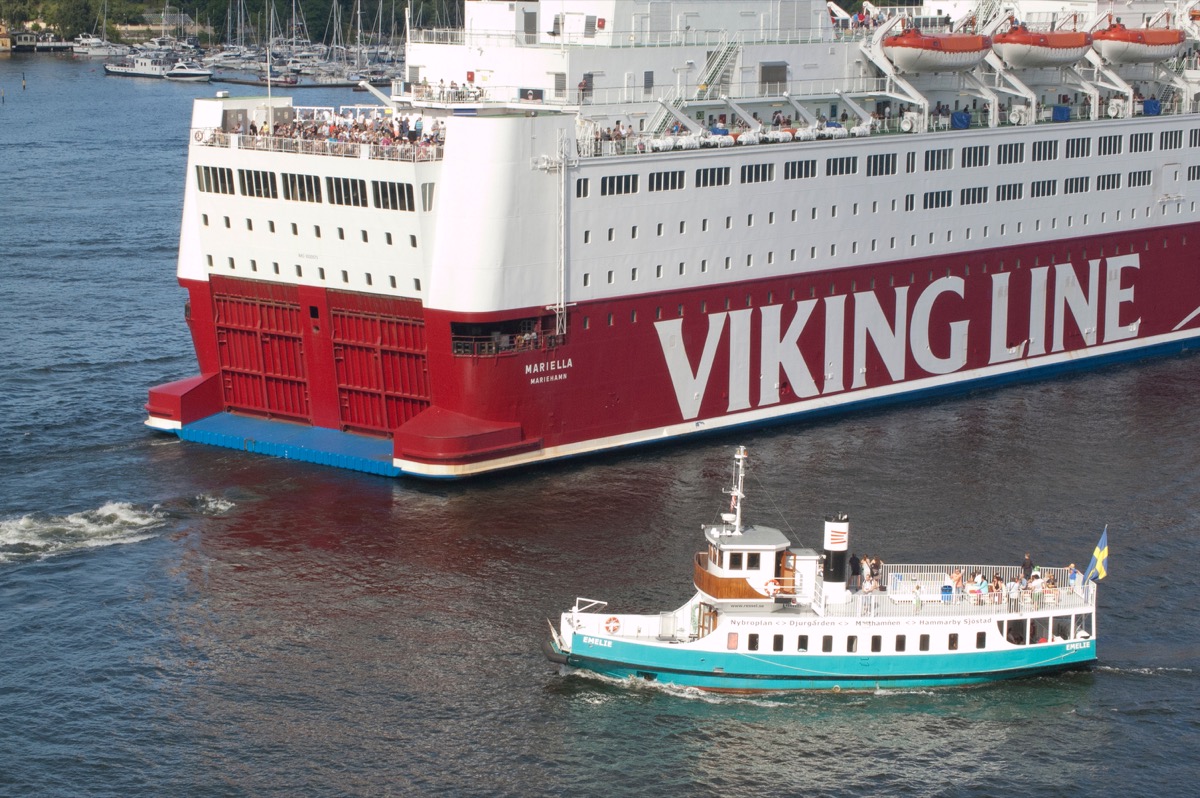
Don’t be surprised if your cruise ship stops to help a few fishermen in need. Sometimes, the ship will receive a distress call and plot a course to complete the rescue; other times, it’ll simply happen across the stranded sailors. But don’t worry about having to participate—your ship’s crew will be highly trained to handle these types of situations.
12
There are cruise ships designed for permanent residents.
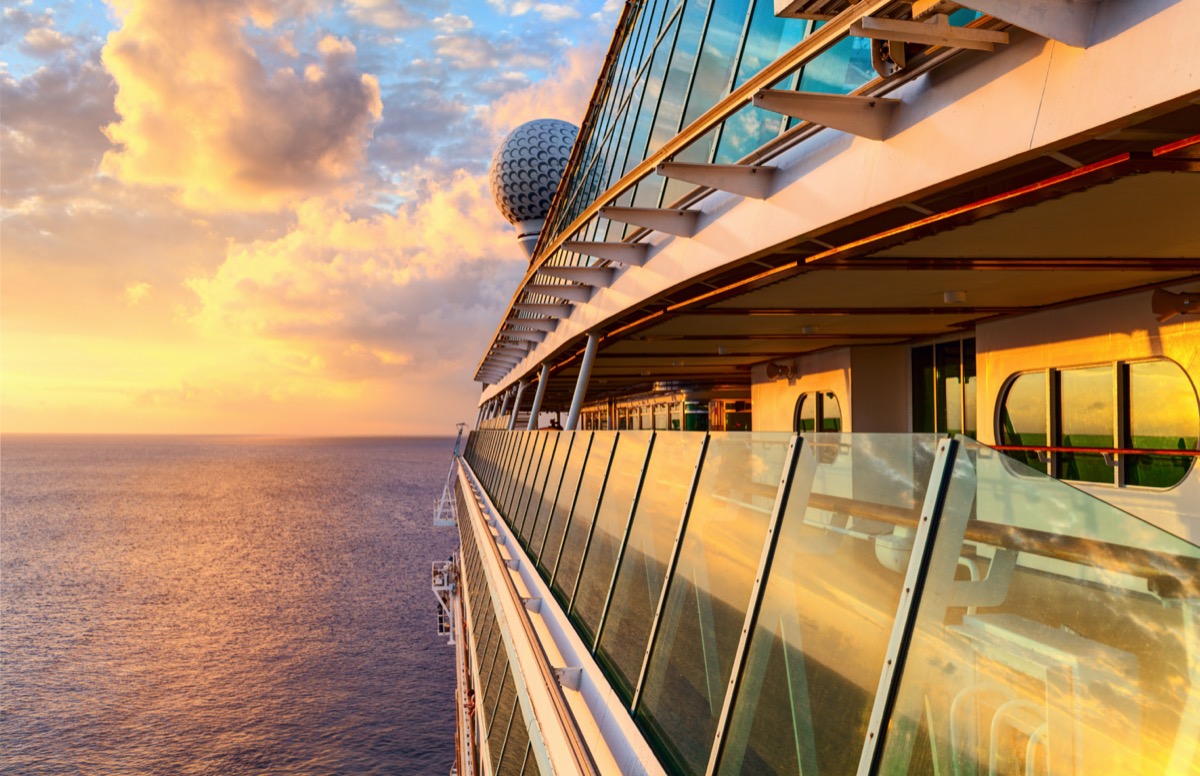
If you wish for nothing more than to spend your entire life at sea, you can realize that dream aboard The World, a luxury ocean liner that offers permanent residence to 165 guests. Residents aboard The World can enjoy sailing to nearly every corner of the globe while reveling in the fact that they never have to live in a landlocked home again.
13
Safety equipment once ironically took down an entire ship.
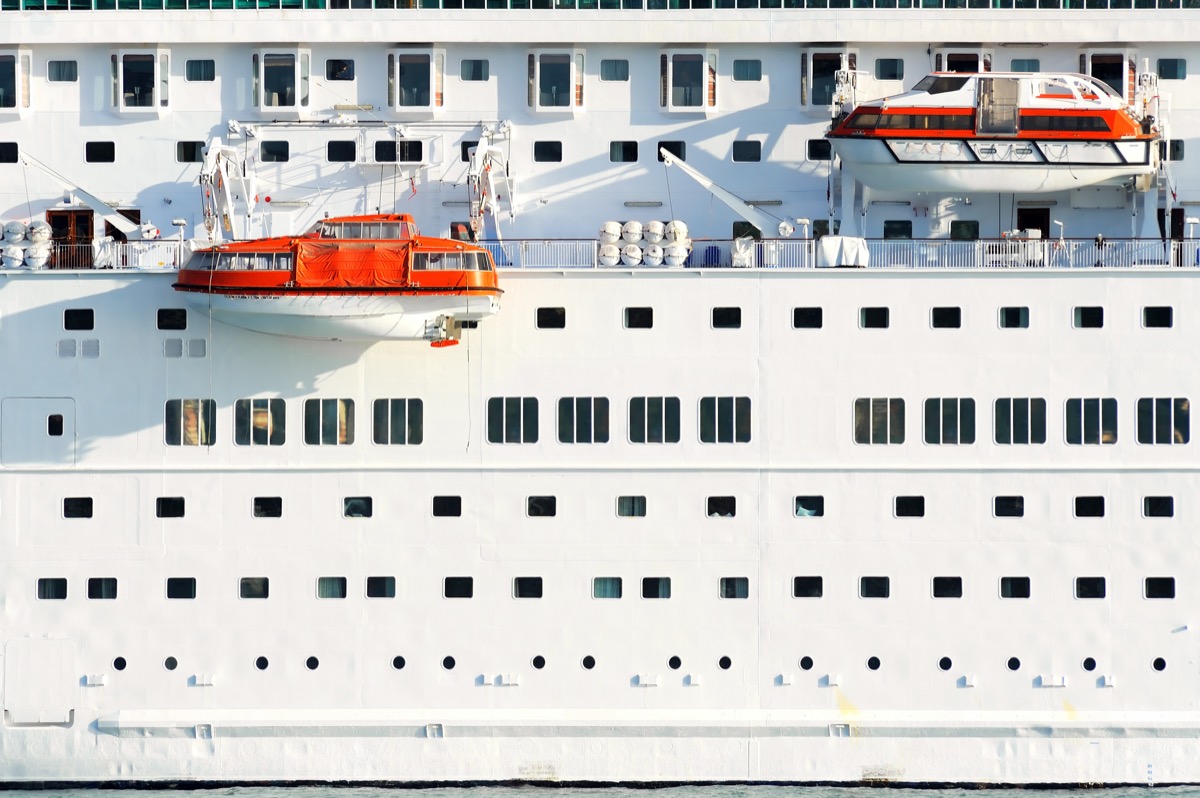
Following the tragedy of the Titanic, more safety equipment was required on all ships. Ironically, this caused disaster aboard the SS Eastland, a cruise ship going through the Great Lakes in 1915, which was loaded with extra lifeboats, rafts, and life jackets for the 2,570 passengers. All the weight from the extra equipment led the ship to roll over and capsize, leading to the deaths of 844 people.
14
Crew members sleep on the lowest levels of the ship.
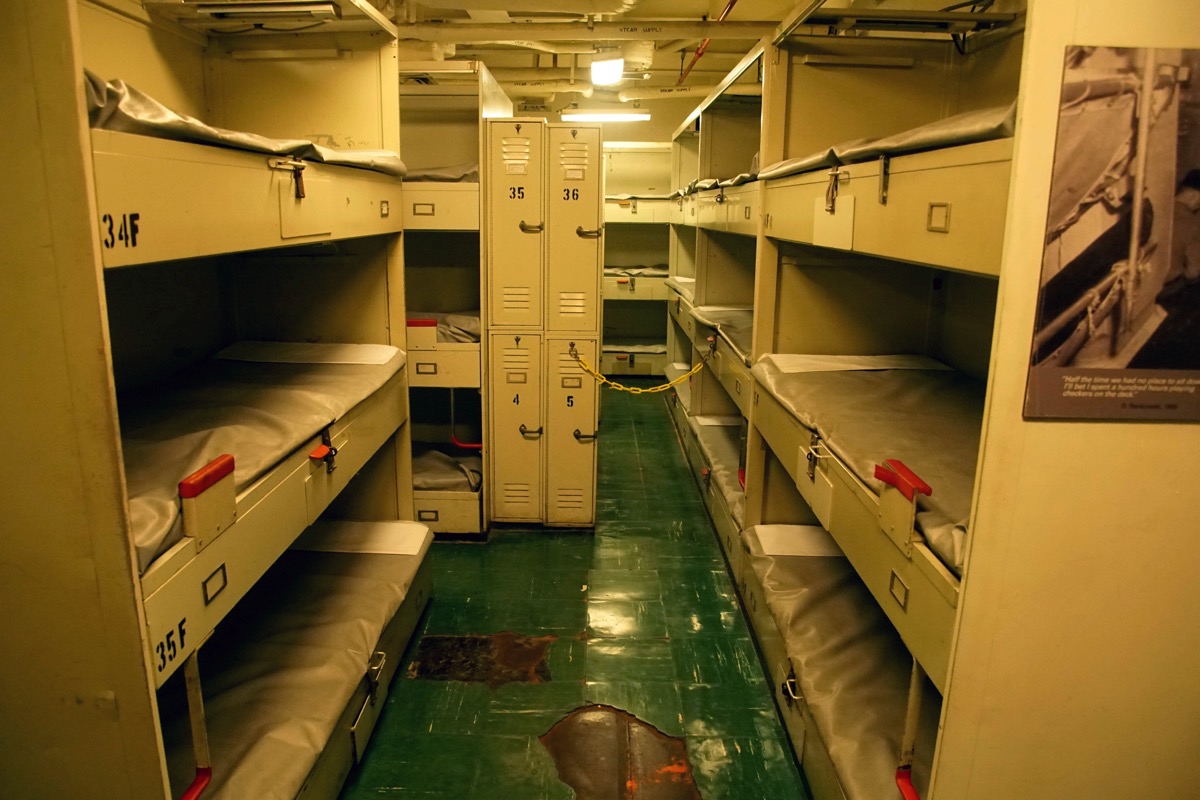
According to Cruise Bulletin, crew members typically live on the “B deck,” which can be found just below the waterline. (On most ships, about a quarter of the boat is underwater.) Crew members typically share dorm-style rooms and are allowed access to gyms, bars, and common areas to eat their meals.
15
Some cruise ships have topless sunbathing decks.
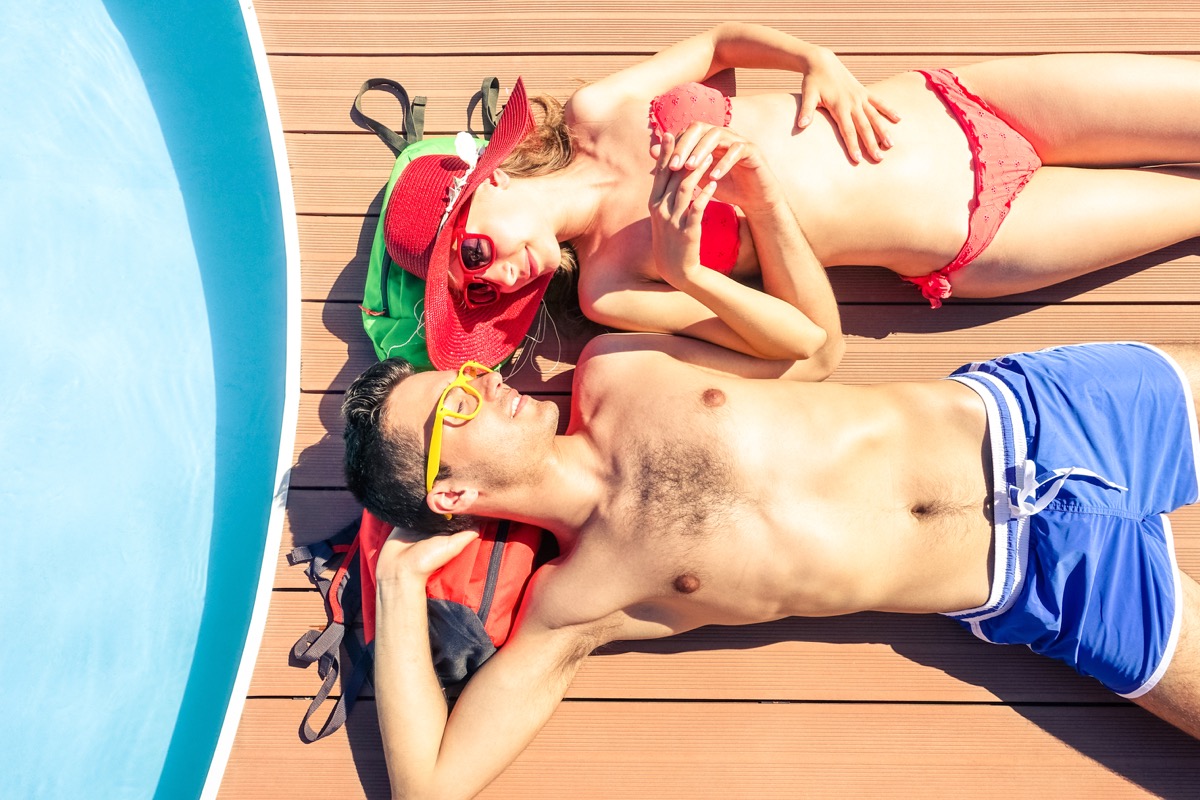
Though most cruise lines do not permit topless sunbathing, a few European ships, such as Hapag Lloyd’s Europa, offer designated decks to do so. Think of it like a nude beach—but in the middle of the ocean.
16
More cruises depart from Florida than any other state.

While the city of Miami has been recognized as “the cruising capital of the world,” the state of Florida boasts four other ports in Fort Lauderdale, Jacksonville, Tampa, and Port Canaveral. That’s more ports than any other state!
17
Cruise cabins are constructed away from the ship.
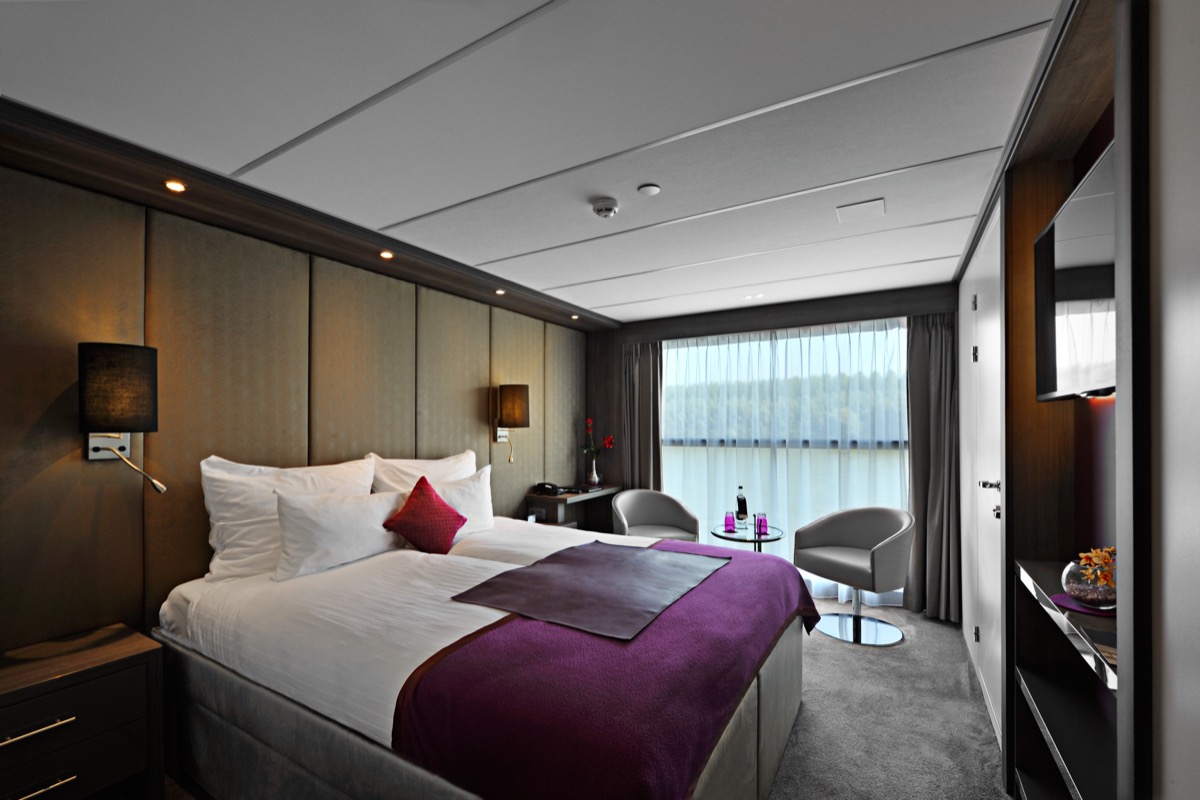
In order for there to be ample room for their construction, cruise ship staterooms are built in an off-site facility and then transported to the shipyard and added to the ship later. In fact, more often than not, both the ship and the cabins are built by separate companies, according to gCaptain.
18
Some cruise ships spend more than 100 days at sea.
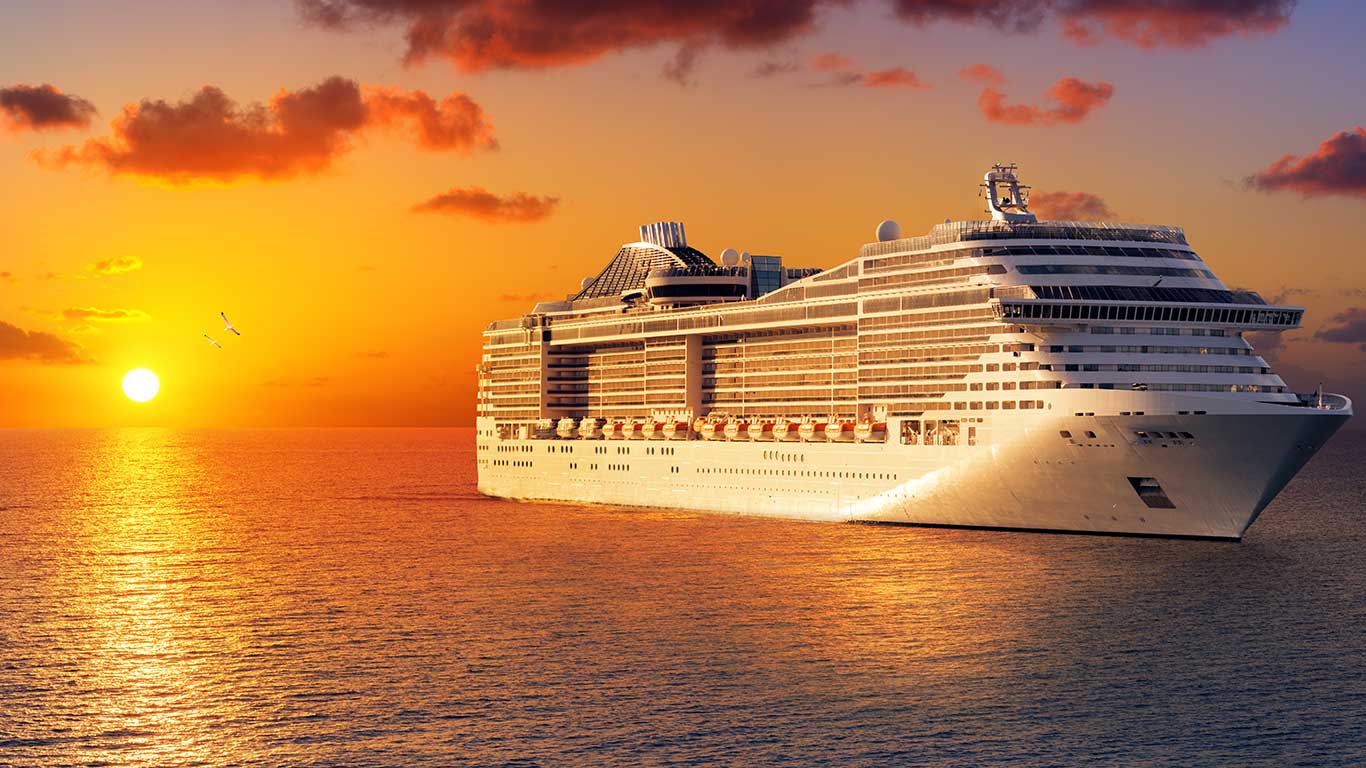
A number of cruise lines now offer multi-month cruises—including the Ultimate World Cruise by Viking Ocean Cruises, which promises to take guests to 59 countries in approximately 245 days. And if you’d like to go, you better be saving your cash. The adventure costs a cool $100,000.
19
The first cruise ship set sail in 1900.
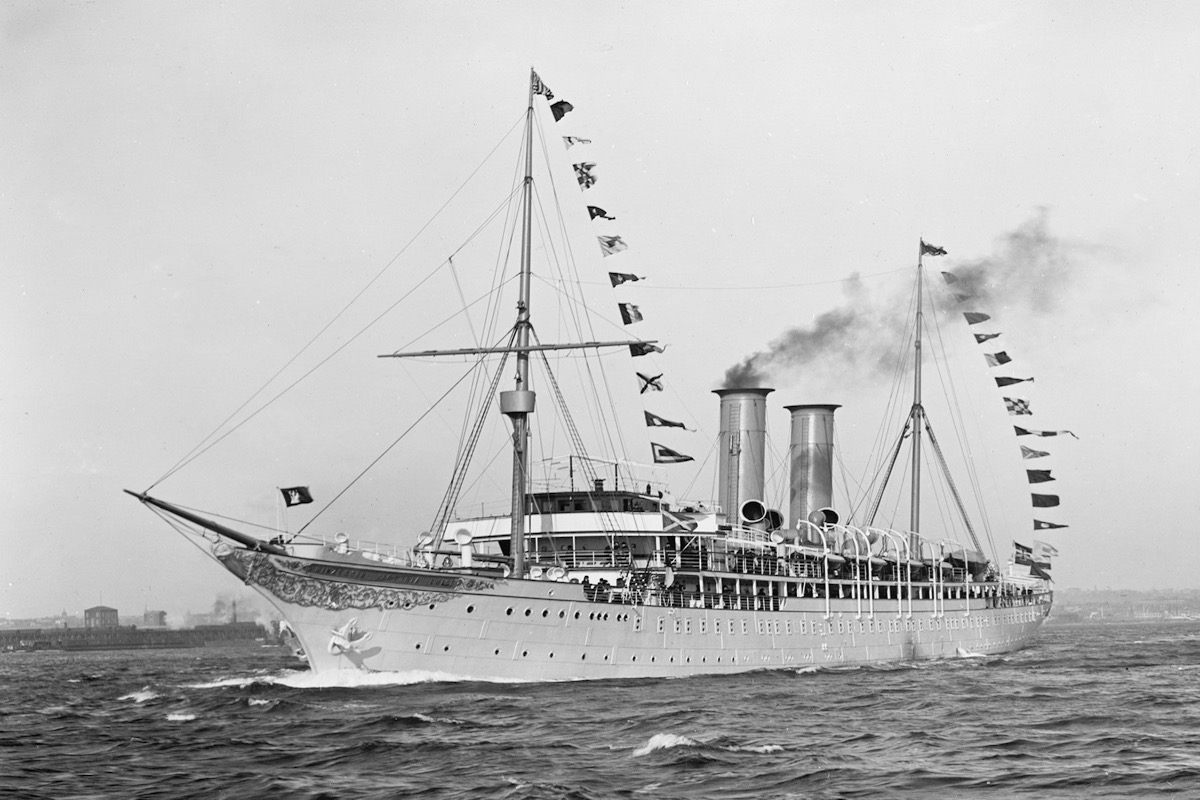
The Prinzessin Victoria Luise, a German passenger ship of the Hamburg-America Line, was the first official cruise ship to set sail in the summer of 1900. Though its size is more similar to a private yacht than any modern liner, the Prinzessin Victoria Luise was revolutionary in its idea that passengers could revel in idyllic destinations from the comfort of a luxury ship.
20
Cruise ship anchors weigh about as much as four elephants.
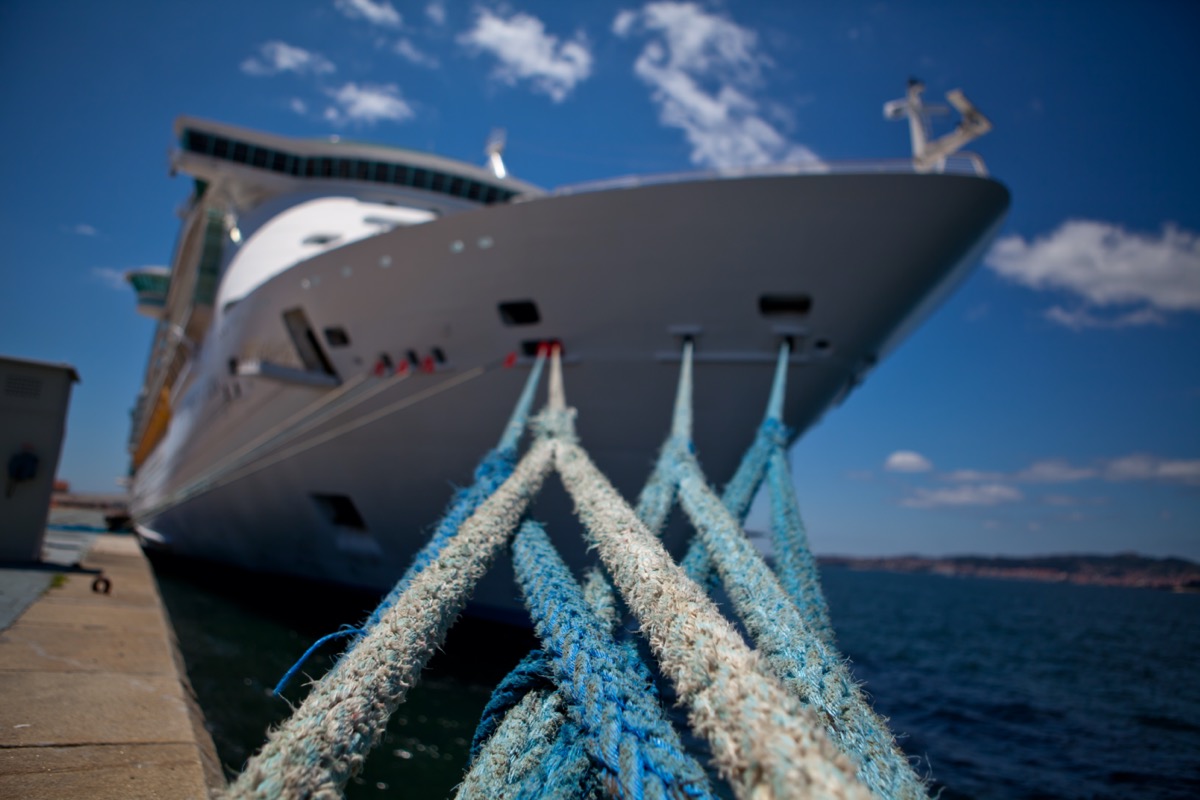
While most cruise ships avoid dropping anchor when possible (the anchors tend to destroy the fragile underwater ecosystem and most ships can stay in place without them), they still exist. And they’re absolutely huge. Cruise ship anchors can weigh up to 20,500 pounds—about the same as four African forest elephants.
21
Some cruise ships have morgues.

Cruise ships are truly prepared for any situation—even death. That’s why, according to the New York Post, some cruise ships come equipped with a morgue that can hold up to three dead bodies. If someone dies aboard, the ship will hold the body until it ports and further arrangements can be made.
22
They also have on-board jails.
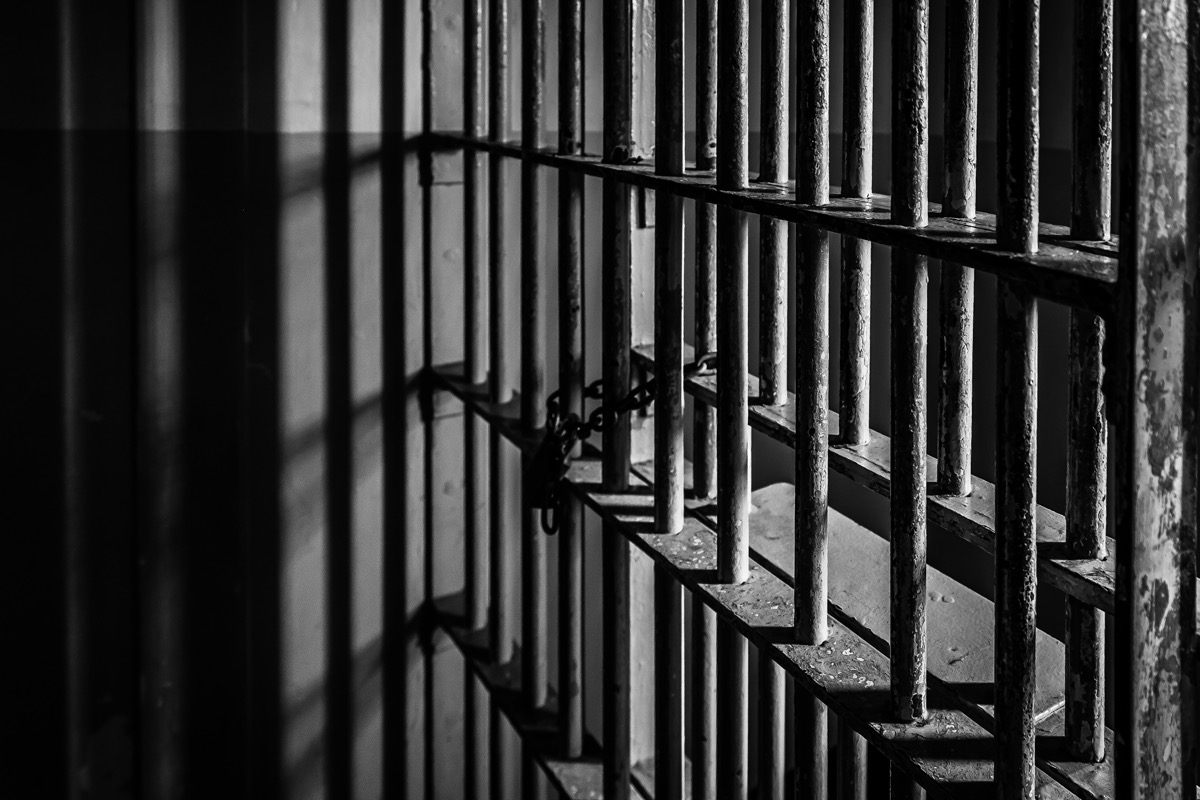
Called the “brig,” most larger cruise ships have a jail to keep any truly unruly passengers at bay. According to Express, the passenger is kept in the jail until they can be handed over to authorities at the next port location.
23
Most cruise ships don’t have a thirteenth deck.
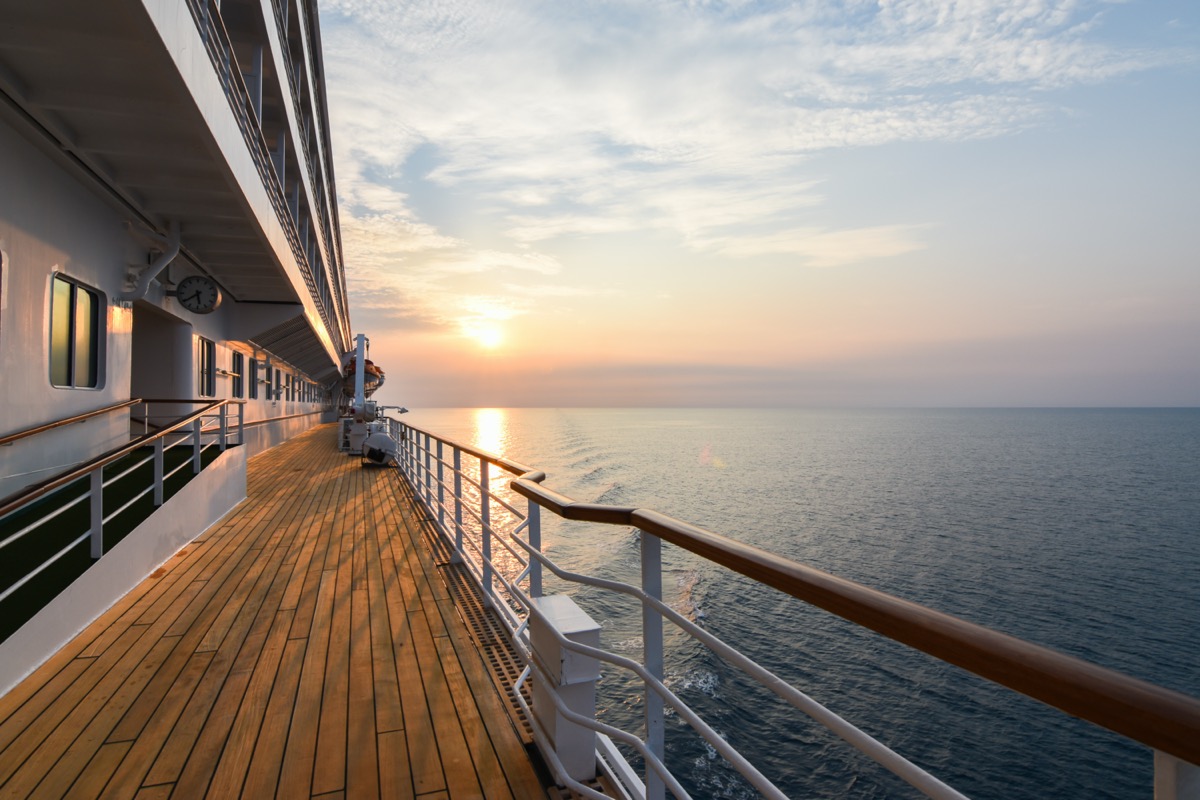
Similar to skyscrapers around the world that omit the 13th floor, cruise lines often skip the 13th deck (and sometimes the 13th cabin) on the basis of superstition. According to Go Away News, this superstition comes from a historic sailor custom to avoid using the number 13 in order to keep luck on your side.
24
Cruise ships offer AA meetings.
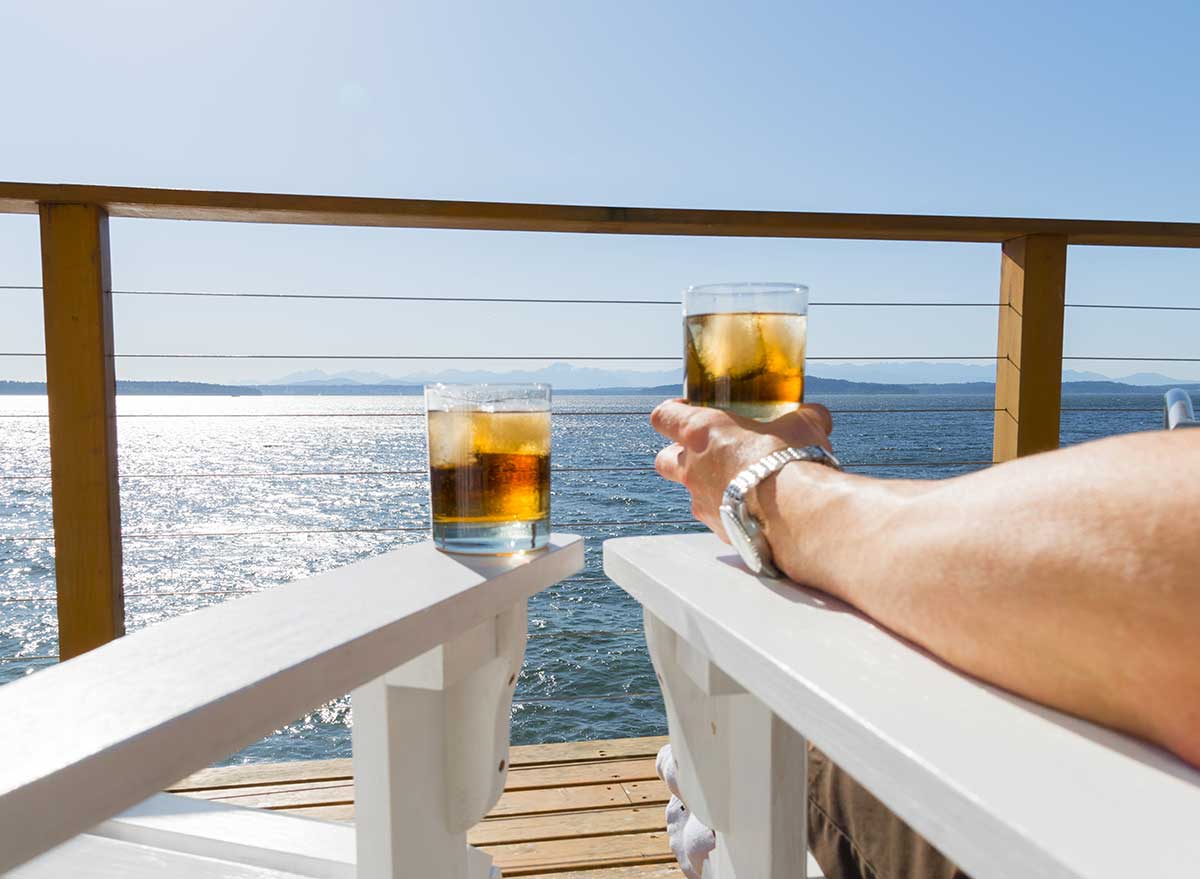
Larger cruise lines, such as Royal Caribbean, Princess Cruises, Celebrity Cruises, and Carnival Cruise Lines, have begun offering Alcoholics Anonymous meetings aboard their ships. In fact, the cruise line Sober Cruises was specifically designed to help recovering addicts heal and connect with new friends, according to Cruise Talk.
25
Cruise ships are terrible for the environment.
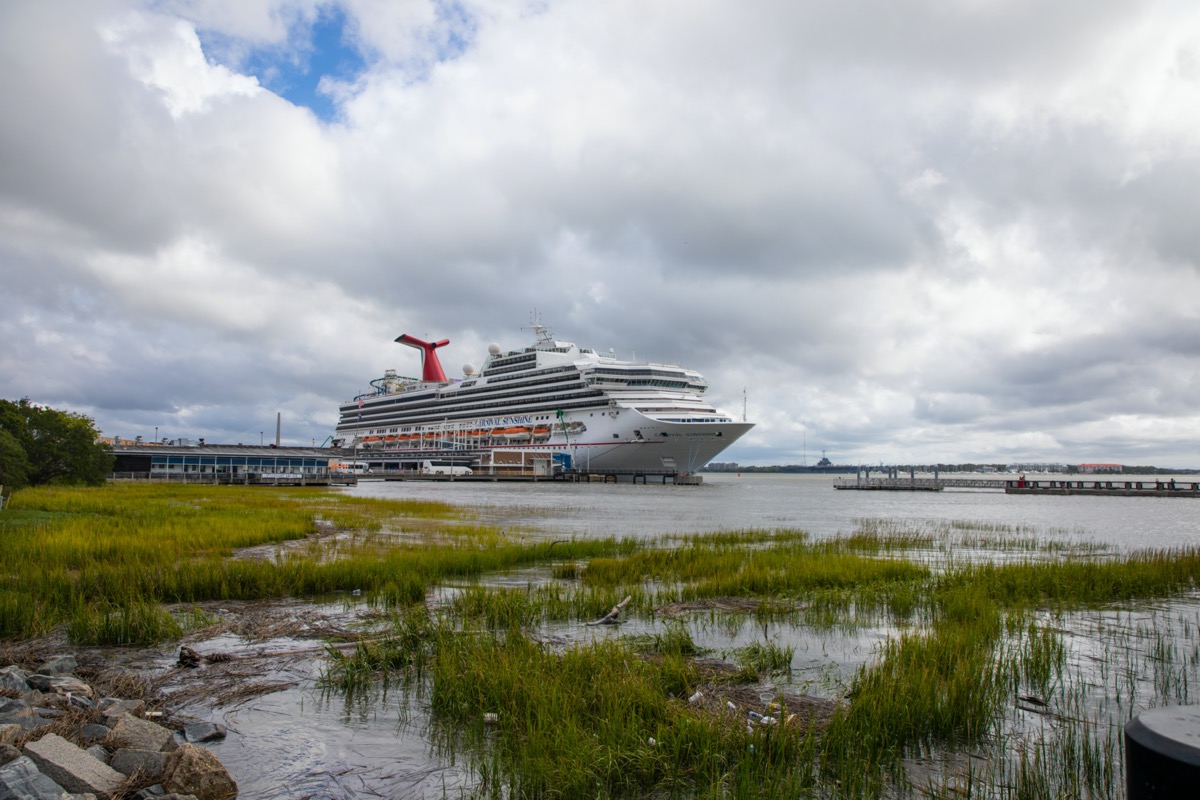
According to research conducted by the German environmental group Nabu, each ship uses an average of 150 tons of fuel a day, which releases the same amount of particulate matter into the air as about one million cars.
26
Cruises produce a stunning amount of sewage.
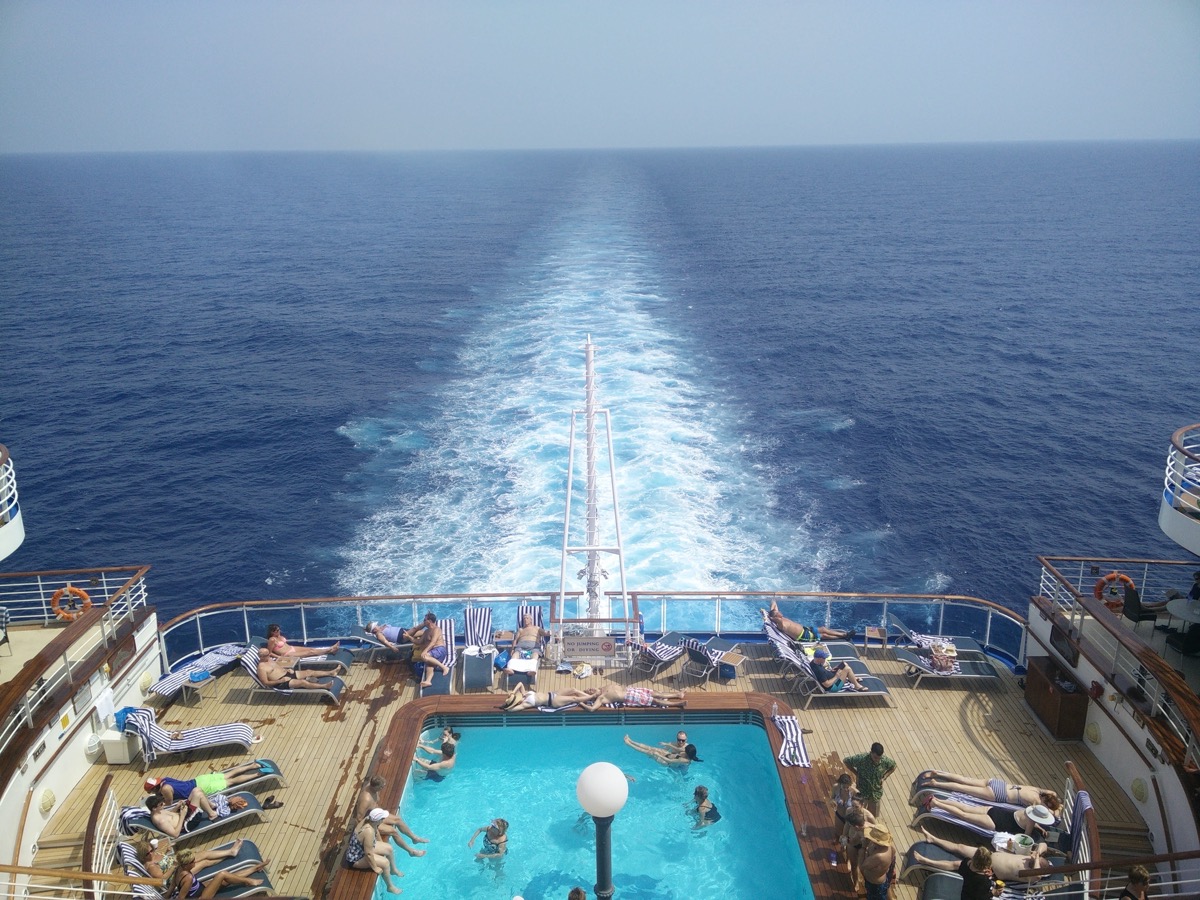
According to the Environmental Protection Agency, the average cruise ship produces an astonishing seven million gallons of sewage per year. And yep, all that smelly stuff goes straight into the ocean. One study found that in 2014, cruise ships dumped more than one billion gallons of sewage into the sea.
27
Cruise ships are only getting more futuristic!
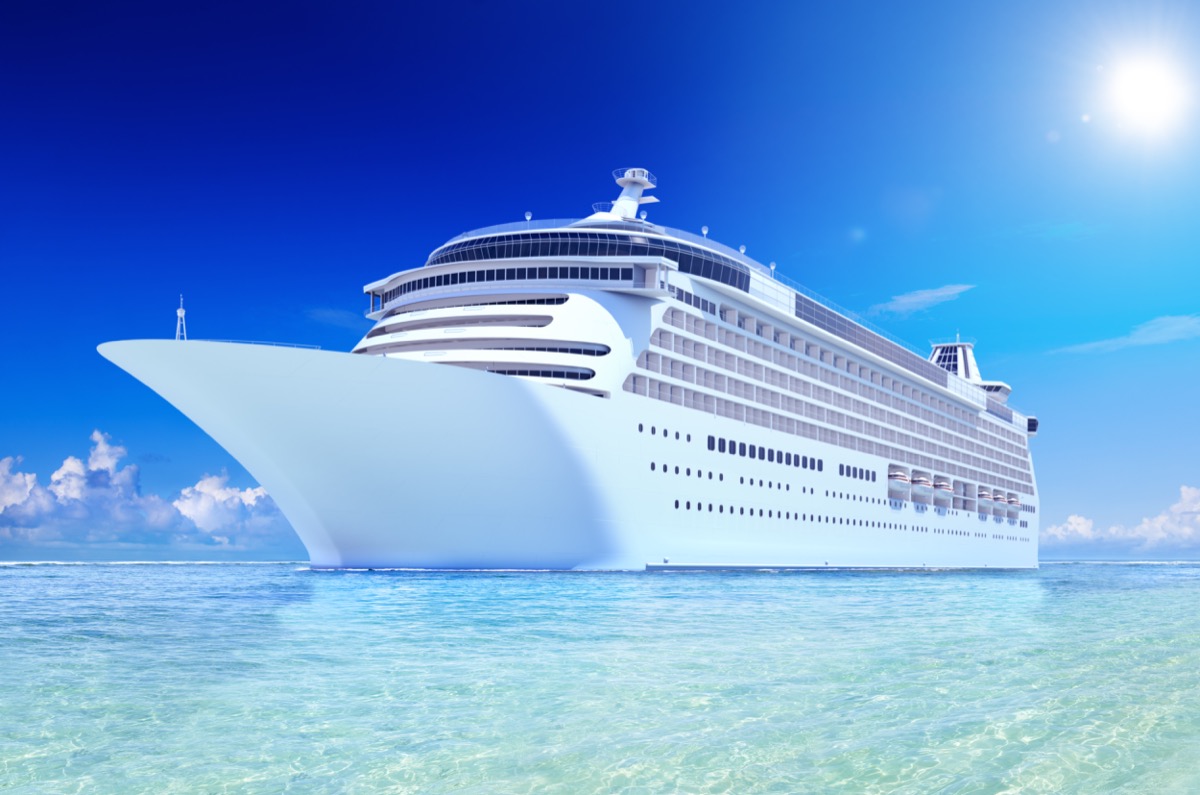
If you thought your last cruise was incredible, just wait until your next one. According to Traveller, cruise ship passengers can expect a seriously futuristic experience on board a number of liners in just a decade’s time. These future accommodations include the delivery of your luggage by robots, activities and onboard preferences answered by one simple app, electronic bracelets that can track your every move, and perhaps even helpful staff holograms that will lead you to your table or direct you to the nearest bathroom. And for more ways to travel stress-free, check out these 20 Ways to Make Travel Less Stressful.